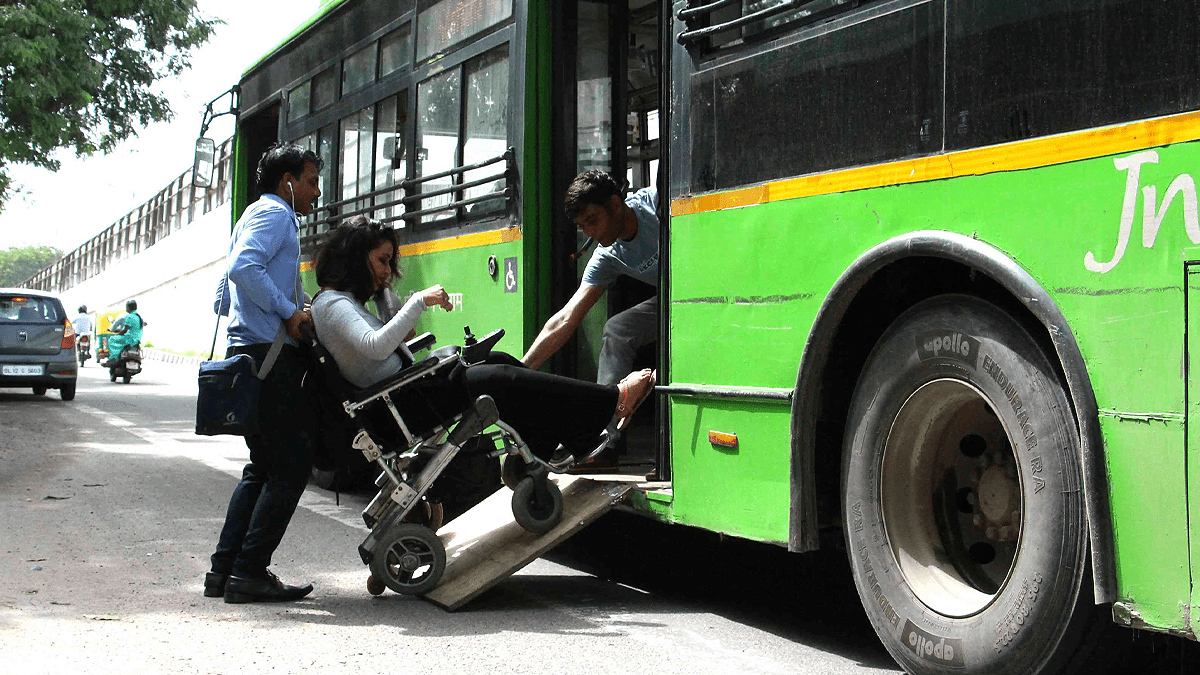
Smooth ride: Tamil Nadu to get new fleet of disabled-friendly buses

A year after restraining the Tamil Nadu government from procuring new buses, the Madras High Court on July 5 gave its nod to buying 2,213 new diesel buses and 500 electric buses in Chennai. The new fleet of buses has to be differently-abled friendly, the court told the state government. This will be an addition to the existing fleet of more than 22,000 buses.
The High Court had stayed the procurement of buses July last year when the government argued that it would definitely purchase the low-floor buses for the disabled for ease of boarding and alighting but in phases. The state had then stated that it has staggered the purchase because most city roads are in bad shape, which would affect the low-floored buses.
Besides the technicalities, the government also underlined the financial constraints in delaying the purchase. The Metropolitan Transport Corporation (MTC), which manages Chennai’s city transport system, argued that each low-floor bus would cost Rs 58 lakh, which is double the price of a regular bus which then cost Rs 26 lakh.
Earlier last year, the state government had stated that only 10 per cent of MTC’s purchases would include low-floor buses while 25 per cent of buses would be the ones using lift-mechanism. Disability rights activist Vaishnavi Jayakumar challenged the state’s decision then stating that the go-ahead violates Section 41 of the Rights of Persons with Disabilities Act, 2016.
As per various provisions of the Act, the state government is bound to take suitable measures to provide facilities for persons with disabilities at bus stops, railway stations and airports conforming to the accessibility standards relating to parking spaces, toilets, ticketing counters and ticketing machines. The access to all modes of transport conforms the design standards, including retrofitting old modes of transport, wherever technically feasible and safe for persons with disabilities, economically viable and without entailing major structural changes in design.
Also read: Tangedco’s wind power evacuation and use touch a new record
‘State’s decision is contempt of court’
The plight of differently-abled bus users is not new. The issue was first raised by activist Rajiv Rajan in 2005.
“In 2006 itself, the then Justice AP Shah had clearly stated that only low-floor buses should be purchased henceforth for the benefit of the disabled. But the state government has been giving excuses for the last 17 years. Again in 2016, then Chief Justice Sanjay Kishan Kaul reiterated the need for low-floor buses. So, the government is in repeated contempt of court since 2005,” Vaishnavi Jayakumar told The Federal.
Meanwhile, the MTC admitted in the court that its buses with mechanical lift systems were a “design failure”.
‘Lack of accessibility and huge cost’
The differently-abled have mobility needs basically for two purposes: one, to get therapy and treatment for their disability and two, to actively get involved in the workforce. But both the needs get affected due to non-availability of disabled-friendly buses,” said Sathish Kumar, a wheelchair user and a member of the Disability Rights Alliance.
“As a result, many disabled bus users have to rely on private transports. It adds to their cost and causes inconvenience. Take my case for instance. I spend nearly Rs 12,000 per month on just transport. Now, the state government has given free rides for the disabled. If we have buses with easy accessibility, my transport cost would not be more than Rs 1,000 to Rs 1,500 per month,” he told The Federal.
Sathish Kumar said that most disabled people receive monthly assistance from Rs 1,000 to Rs 1,500. But if they depend on private transport, the amount won’t suffice.
Design faults in the buses
Sathish Kumar said that in 2010 the government introduced some 10 buses with a lift mechanism system, which proved to be a failure.
In 2005, Rajiv Rajan filed a petition based on the 1995 Disability Act. Accordingly, the state introduced 10 buses with lift mechanisms. A decade later none of the buses are in working condition because an average duration of a bus is seven to eight years. In 2019, some new buses were introduced. Though they were slightly better than the earlier models, they too had problems. “The new buses too had lift mechanism but were spacious. The open lifts require some seven feet wide space. How many bus stops have that amount of space? Besides, the height of the lift is about four feet from the road. In case of malfunctioning, a disabled person may get seriously hurt,” said Sathish.
In 2019, the MTC purchased 695 buses and State Express Transport Corporation (SETC) procured 492 vehicles. There are eight divisions of SETC in the state and according to the Freedom of Movement Coalition (FMC) report released on March 2022, at least 4,381 new buses were added post-2016 order that mandated low-floor buses. Unfortunately, none of those 4,000 plus buses was disabled-friendly.
The FMC report emphasises the height specification of the buses. The report states that as per Urban Bus Specifications-II provided by the Ministry of Urban Development in 2013, it is mandatory that the Ground to bus Floor Height should be of maximum 650 mm and minimum 400 mm and with that specifications, the buses must be procured in the cities which has more than one million population.
The MTC stated said in a response to an RTI application in September 2021 that the corporation has only 20 per cent of vehicles that can be called a bus, said the FMC report.
“A total of 2,822 of MTC’s 3,460 vehicles (80 per cent of the fleet) are not recognised as buses, because they are built on truck chassis (the metal frame of a vehicle onto which the other parts fit) of almost 4 feet height,” the report said.
“We demand the government to introduce low-floor buses because it not only helps the disabled, but also pregnant women and elderly,” Sathish Kumar said.
‘Low-floor buses get hit by speed breakers’
Interestingly, during the hearing, chief justice Munishwar Nath Bhandari observed that low-floor vehicles are not advisable for Indian roads, given the conditions of speed breakers.
According to a Times of India report, published in January 2021, most of the speed breakers in Chennai were not made as per the Indian Road Congress norms. The norms given by the Congress, an apex body of the highway engineers in the country, specifies that the height of the speed breaker should not be more than 10 cm and the width should be 3.7 m. But at several places, the height exceeds 10 cm and the width comes down to 1 to 2 m.





